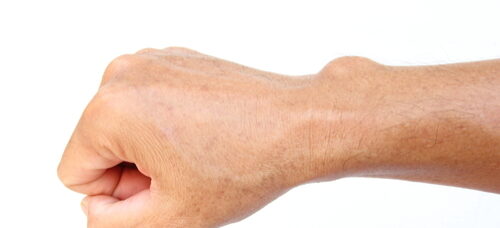
The Use of Orfit Coils and Wires in Orthotic Fabrication
With video tutorial
Springs and lengths of wire with coils store potential energy which can be released to do “work”. These components can easily be incorporated into mobilization orthoses to provide “work” in the form of functional support of joints, assistance for weak or absent muscles, and resistance or stretch to joints with limitations in joint range of motion.
Stretching a spring or bending a wire with a coil requires the release of energy: when the spring is pulled to a certain length, the force needed is equal to the tension for that length. This force is increased as the spring stretches or the spring wire bends.
The potential energy available to do “work” depends on the thickness of the wire, the length of the wire and the diameter of the coils. The practice of twisting the wire into helical coils helps to control the energy through the number and the diameter of each helical twist.
Therapists can purchase prefabricated orthoses with coils, or they can purchase spring wire and use rounded pliers and a jig to create their own coils. Orfit Industries offers ready-made coils in four distinct sizes:
- Finger Coil Springs
- Knuckle Bender Coil Springs
- Finger Extension Assist
- Wrist Extension Coil Springs
1. # 35800 Finger Coil Springs (10 pcs.)
To assist in Proximal-interphalangeal (PIP) joint extension.
Indications: Clinical conditions where patients lack full active PIP joint extension due to muscle and/ or nerve injury. The coils are not necessarily strong enough to correct strong flexion contractures of the PIP joint. However, the coils will assist with joint extension to allow for functional release of objects.
Watch the video tutorial.
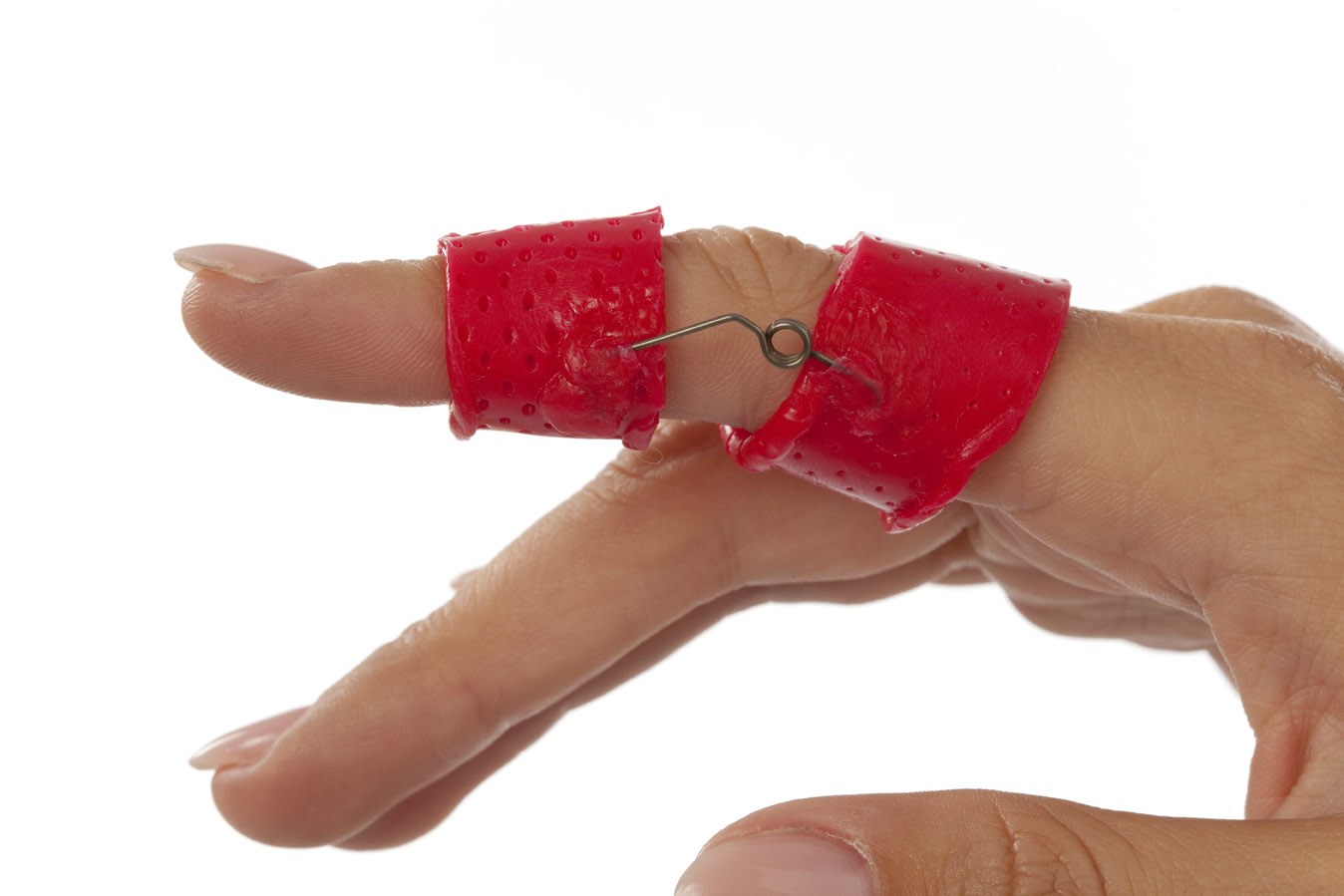
Finger Coil Spring
Art. #35800
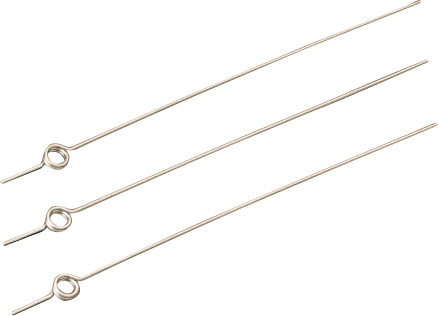
Finger Coil Springs
Art. #35800
2. # 35801 Knuckle Bender Coil Springs (10 pcs.)
Our Orfit Knuckle Bender Coils Springs are typically used to assist in keeping the Metacarpo-phalangeal (MCP) joints in flexion when a patient has a nerve or muscle injury. One of the most common conditions might be ulnar nerve palsy, characterized by hyperextended MCP joints. Here we show a variation where the coils have been modified slightly and are used to help keep the proximal interphalangeal (PIP) joints extended. The most common clinical condition where this would be helpful is for patients with a PIP joint flexion contracture.
Watch the video tutorial.
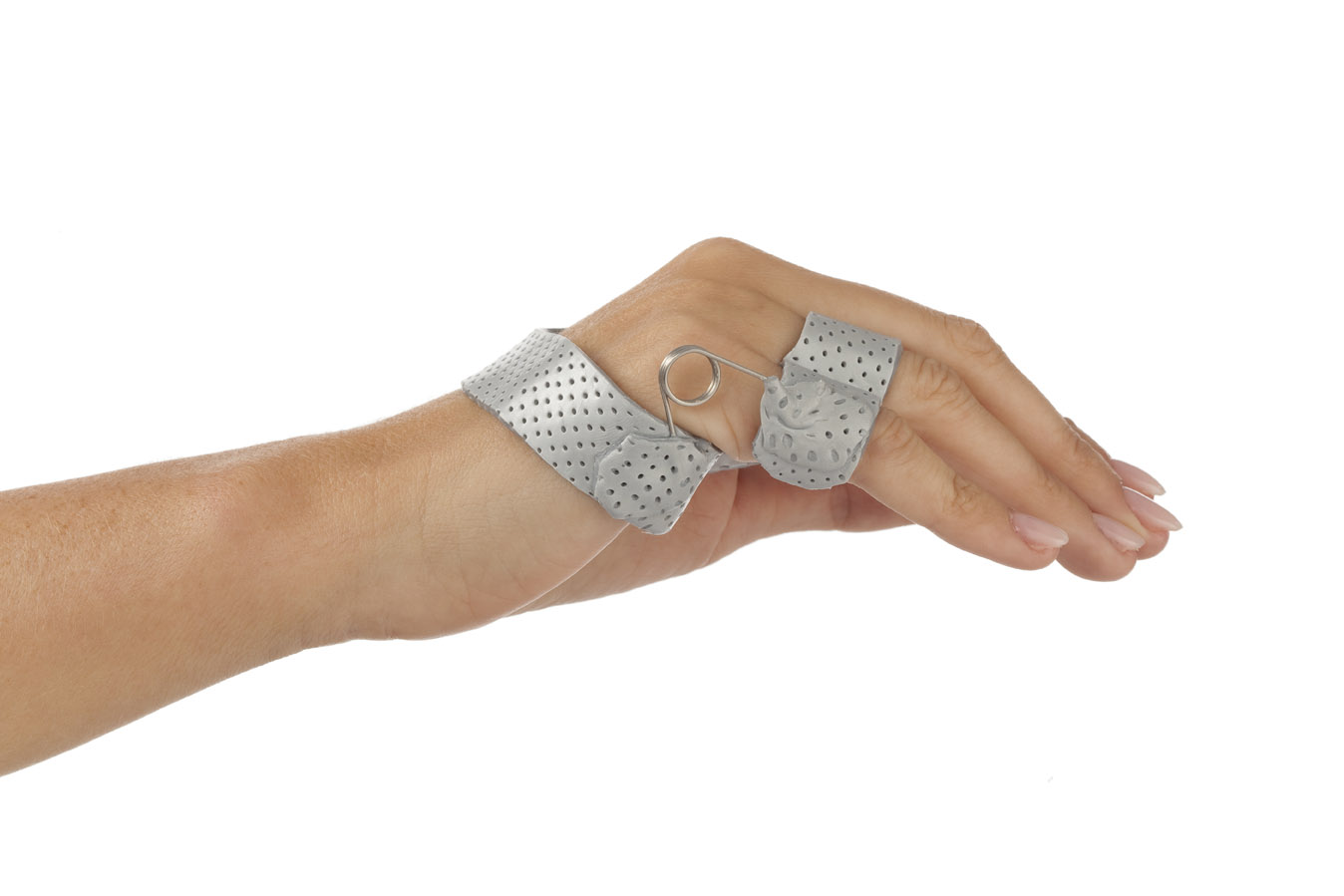
Knuckle Bender Coil Spring
Art. no: 35801
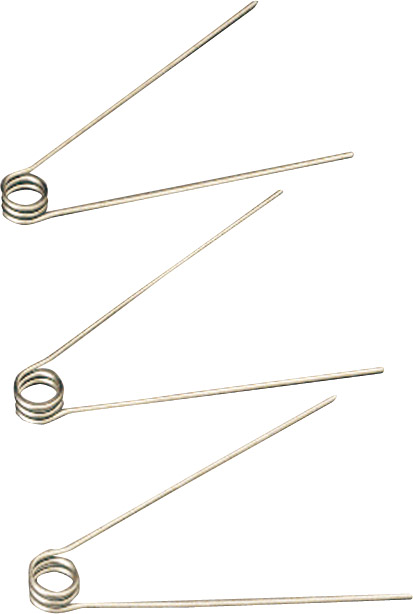
Knuckle Bender Coil Springs
Art. no: 35801
.
3. # 35802 Finger Extension Assist (10 pcs.)
To assist in Metacarpo-phalangeal (MCP) joint extension.
Indications: Clinical conditions where patients lack finger extension at the MCP joints due to extensor tendon injuries and/or nerve injury to the radial nerve.
Watch our video tutorials part 1, part 2 and part 3.
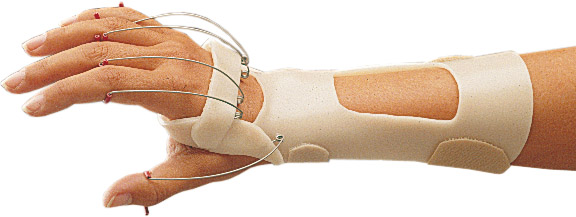
Finger Extension Assist
Art. #35802
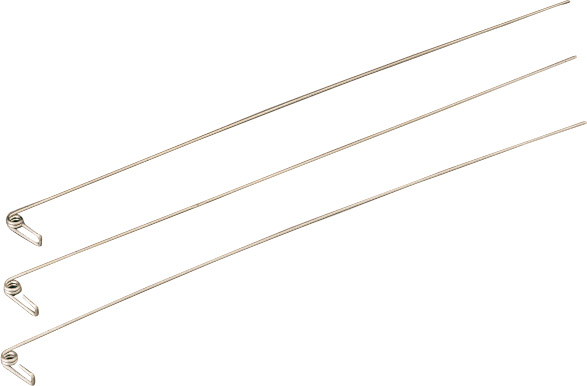
Finger Extension Assist
Art. #35802
4. # 35804 Wrist Extension Coil Spring (5 pairs)
To assist in wrist extension.
Indications: Clinical conditions where the client lacks full active extension due to nerve and/ or muscle injury or trauma.
The coils can assist with assisting wrist extension for functional activities.
Most common clinical conditions are radial nerve palsy and/ or extensor muscle weakness of the wrist extensors. The coils are not meant for use with wrist flexion contractures.
Watch the video tutorial.

Dynasyst Springs – Wrist Extension Coil Spring
Art. #35804
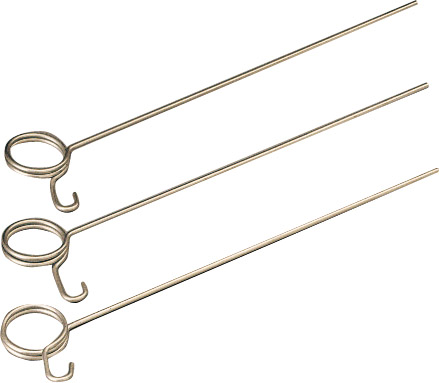
Wrist Extension Coil Springs
Art. #35804
This assortment allows therapists a choice for selection of the appropriate coil for each specific joint and pathology. Those coils have been designed for specific joints each, which means that they are calibrated to not exceed the maximum force on the joints.
We also sell Spring Wire (# 35805) which is easy to manipulate into custom made coils for orthotic fabrication. Watch the video tutorial.
Tips and Tricks for working with Orfit coils and wire:
- The axis of the helix or coil should approximate the axis of movement of the specific joint being mobilized.
- The longer the wire length, the less powerful will be the resistance to a force at the end of the long lever arm.
- Force applied to the lever arm will follow the direction of the last helical twist. When the force is applied in the opposite direction of the last helical twist, it causes an opening of the twist and reverses the potential energy. The force will be lessened when the coil is turned over.
- To secure a coil onto the base orthosis, the ends of the wire should be bent into a “U” shape or “hook” shape using pliers.
- There are two basic ways to anchor this hook onto the base orthosis.
- The hook shaped end can be heated up with dry heat and embedded or melted into the thermoplastic material of the base orthosis until it is level with the material. If pulled, the material inside the “hook” prevents the wire from being pulled straight out of the orthosis. Cover the hook with dry heated thermoplastic material. Wait until it is cool before testing the coil.
- Cover the “hook” shape with dry heated Orficast material and then secure to the base orthosis. Wait until it is cool before testing the coil.
- Avoid sharp angles and notches that might cause breaking points in the wire. Use rounded pliers for easier bending of the wire.
- Place the coil so that active patient motion winds up the coil.
- Adjust the coil strength by augmenting or diminishing the number of coils with pliers.
- To replace a coil, heat up the coil arm, detach from the orthosis and replace.
![]()

Writer: Debby Schwartz, OTD, OTR/L, CHT
Physical Rehabilitation Product and Educational Specialist at Orfit Industries America.
Debby is a certified hand therapist with over 36 years of clinical experience. She completed her Doctorate of Occupational Therapy at Rocky Mountain University of Health Professions in 2010. She has worked at Orfit Industries America as Product and Educational Specialist since 2007.
Debby is also an adjunct professor at the Occupational Therapy Department of Touro University, School of Health Sciences, and at the Occupational Therapy Department at Yeshiva University, Katz School of Science and Health in NYC. She has written many book chapters in the field of hand therapy and multiple articles for hand therapy journals, including the ASHT Times and the Journal of Hand Therapy. She has published a new textbook on orthotic fabrication together with Dr. Katherine Schofield, entitled “Orthotic Design and Fabrication for the Upper Extremity: A Practical Guide”.
![]()
If you’d like to receive the latest product updates and interesting Orfit news, subscribe to our newsletter:


